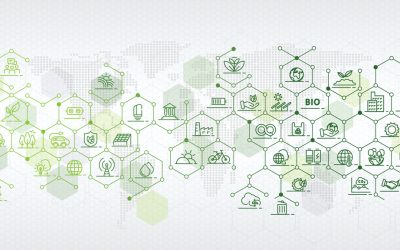
In today’s increasingly environmentally-conscious world, businesses are recognising the importance of integrating sustainability into their operations. Embracing sustainable practices not only benefits the environment but also enhances brand reputation, drives innovation, and fosters long-term profitability. If you’re looking to embark on a business sustainability journey but aren’t sure where to begin, here are some key steps to get started:
1. Assess Your Current Environmental Impact
The first step in any sustainability journey is to understand your organisation’s current environmental footprint. Conduct a comprehensive assessment to identify areas of high energy consumption, waste generation and greenhouse gas emissions. This may involve analysing utility bills, conducting waste audits and quantifying emissions from various sources. By gaining insights into your environmental impact you can pinpoint areas for improvement and set meaningful sustainability goals.
2. Define Clear Sustainability Goals and Objectives
Once you’ve assessed your environmental impact define clear and measurable sustainability goals aligned with your organisation’s values and priorities. Whether it’s reducing carbon emissions, minimising waste or promoting renewable energy adoption, set specific targets that are achievable within a defined timeframe. Ensure that your sustainability goals are SMART: specific, measurable, achievable, relevant, and time-linked. Communicate these goals effectively to stakeholders to secure support and accountability.
3. Engage Stakeholders and Build Internal Support
Sustainability is a team effort that requires buy-in from all levels of the organisation. Engage employees, management, suppliers and customers in the sustainability journey by fostering a culture of environmental responsibility and social consciousness. Encourage collaboration, solicit feedback and empower employees to contribute ideas and initiatives. Building internal support for sustainability initiatives is essential for driving meaningful change and embedding sustainability into the organisational culture.
4. Conduct a Materiality Assessment
Identify the most significant environmental, social, and governance (ESG) issues that are relevant to your business and stakeholders through a materiality assessment. Consider factors such as industry trends, stakeholder expectations, regulatory requirements and potential risks and opportunities. Prioritise ESG issues based on their significance to your business and their impact on stakeholders. This will help you focus your sustainability efforts on areas where you can make the greatest positive impact.
5. Implement Sustainable Practices Across Operations
Translate your sustainability goals into action by implementing sustainable practices across all aspects of your operations. This may include:
– Improving energy efficiency through equipment upgrades, building retrofits and operational optimizations.
– Reducing waste through recycling, composting and waste minimization strategies.
– Sourcing materials and suppliers that adhere to responsible sourcing practices.
– Promoting sustainable transportation options for employees and optimising logistics to minimise emissions.
– Investing in renewable energy sources, such as solar or wind power, to reduce reliance on fossil fuels.
6. Measure, Monitor, and Report Progress
Establish robust monitoring and reporting mechanisms to track your progress towards sustainability goals and objectives. Implement key performance indicators (KPIs) to measure environmental metrics, such as energy consumption, water usage, waste generation and carbon emissions. Regularly assess performance against targets, identify areas of improvement and adjust strategies as needed. Transparently communicate your sustainability achievements and challenges to stakeholders through sustainability reports, annual disclosures and other communication channels.
7. Continuously Improve and Innovate
Sustainability is an ongoing journey of continuous improvement and innovation. Stay informed about emerging trends, technologies and best practices in sustainability to remain at the forefront of environmental stewardship. Encourage a culture of innovation and experimentation and be open to exploring new ideas and solutions. Engage with industry peers, sustainability experts and community partners to exchange knowledge and collaborate on shared sustainability goals. By embracing a mindset of continuous improvement you can drive positive change and make meaningful contributions to a more sustainable future.
Embarking on a business sustainability journey requires commitment, collaboration and strategic planning. By following these key steps and integrating sustainability into your organisational DNA you can create value for your business, society, and the environment. Start small, set achievable goals and celebrate progress along the way. Remember that every step towards sustainability makes a difference and contributes to building a more sustainable future for generations to come.
What are the 9 Planetary Boundaries and why do they matter?
The planetary boundaries framework, first introduced in 2009 by Swedish scientist Johan Rockström and his colleagues, updated in subsequent...
Scope 3 vs. Scope 4 Emissions in Business Sustainability: Understanding the difference
In the realm of business sustainability, understanding and mitigating greenhouse gas emissions have become paramount. Among the various categories...
Scope 4 emissions: Addressing Upstream and Downstream emissions
In recent years, the conversation surrounding sustainability in business has expanded beyond just internal operations to encompass the entire value...
Understanding Emissions Scopes: What are scope 1, 2 and 3 emissions?
Understanding and effectively managing greenhouse gas emissions is essential in Business Sustainability. Emissions are commonly categorised into...
Understanding Net Zero
In recent years, the concept of achieving "net zero" has gained significant traction in the realm of sustainability, particularly concerning...
What is Business Sustainability? Building a Sustainable Future
Building a Sustainable Future: The Key Elements of Business Sustainability In today's world, the concept of sustainability has become more than just...






